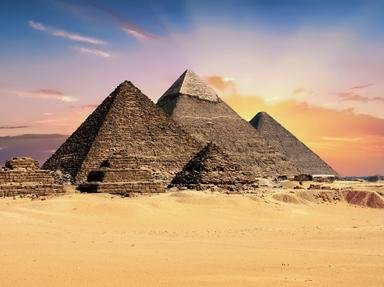Quiz Answer Key and Fun Facts
1. Who is listed as the author of "On the Seven Wonders of the World", the oldest surviving literary account about the great sites?
2. Which of the following is NOT one of the ancient wonders?
3. Which Egyptian pharaoh had the Great Pyramid built?
4. Where was the ancient wonder the "Hanging Gardens" supposedly built?
5. The Lighthouse of Alexandria was located on which island?
6. The Mausoleum at Halicarnassus was a lavish tomb built in southern Anatolia. Which type of building did the mausoleum look most similar to?
7. In which biblical city was the site of The Temple of Artemis?
8. The Colossus of Rhodes was a massive likeness of which mythical god?
9. The flesh of the chryselephantine-style Statue of Zeus at Olympia was constructed of what material?
10. Which ancient wonder was still viewable until around 1480 CE when the remaining parts were used to build the Citadel of Qaitbay?
Source: Author
BigTriviaDawg
This quiz was reviewed by FunTrivia editor
trident before going online.
Any errors found in FunTrivia content are routinely corrected through our feedback system.
